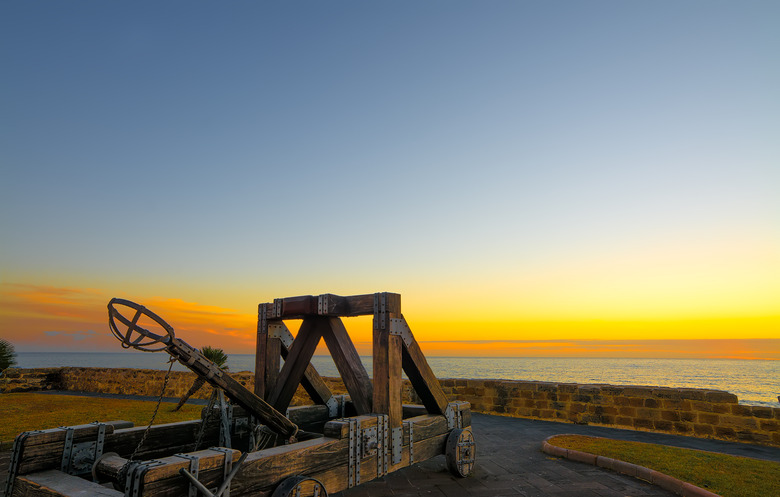How To Make A Catapult Launch Farther
Catapult building is a common competition in physics classes. If you have to build a catapult for your class, don't fall into the trap of thinking that more power will result in a better launch. More power behind your launch is definitely helpful, but you'll have to use your physics knowledge to maximize that power. The most important thing to focus on is your catapult's trajectory. The right trajectory will be efficient and produce the results you're looking for.
Use Bungee Cord Power
Use Bungee Cord Power
Use the tension of bungee cords as opposed to springs to power your catapult. The cords should be attached to the front of the catapult and at the front of the catapult arm. When the arm is pulled back, the tension in the cord will pull the arm forward. This front-powered system will provide more power than rear-spring powered catapults.
Shoot From the Best Angle
Shoot From the Best Angle
Create an arm break that stops the arm at a 45-degree angle from the floor. A 45-degree angle is the best angle to maximize the efficiency of your catapult. The arm break can be made of the same material that comprises the frame of your catapult. It should run across the widths of the base and be in position to make contact with the catapult arm.
Use a Snug Fit
Use a Snug Fit
Measure the item you will be using for the catapult project. Next, find a cup to make your own holding device with the same dimensions. You want your projectile to fit snugly in the catapult to prevent the projectile from rattling around during the launch. The rattling around will prevent your projectile from launching at 45 degrees.
A Sturdy Base Makes a Big Difference
A Sturdy Base Makes a Big Difference
Weigh down the base of your catapult to prevent it from moving around during the launch. Any movement in the base can reduce the amount of power behind the launch and can also compromise the trajectory. It's particularly important to weigh down the back of the catapult since the natural movement of the arm with make the catapult lurch forward.
Cite This Article
MLA
Montoya, David. "How To Make A Catapult Launch Farther" sciencing.com, https://www.sciencing.com/make-catapult-launch-farther-7784454/. 13 March 2018.
APA
Montoya, David. (2018, March 13). How To Make A Catapult Launch Farther. sciencing.com. Retrieved from https://www.sciencing.com/make-catapult-launch-farther-7784454/
Chicago
Montoya, David. How To Make A Catapult Launch Farther last modified August 30, 2022. https://www.sciencing.com/make-catapult-launch-farther-7784454/
